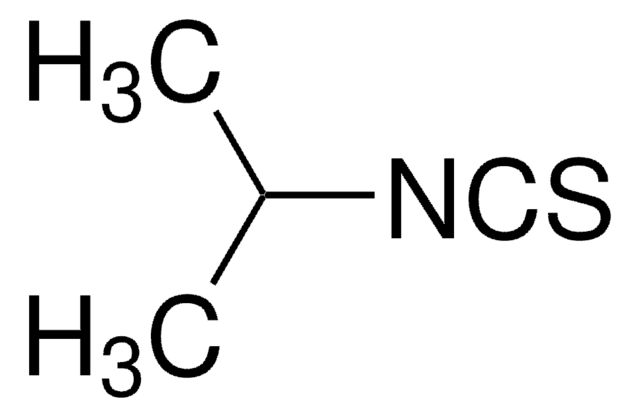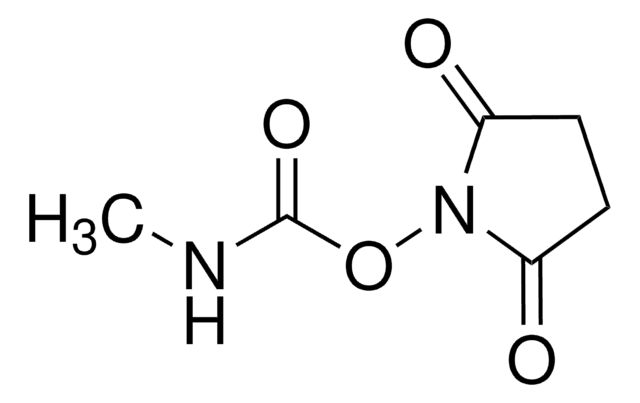112771
Methyl isothiocyanate
97%
Sinonimo/i:
Isothiocyanatomethane, Isothiocyanic acid methyl ester
About This Item
Prodotti consigliati
Tensione di vapore
21 mmHg ( 20 °C)
Livello qualitativo
Saggio
97%
P. eboll.
117-118 °C (lit.)
Punto di fusione
30-34 °C (lit.)
Solubilità
H2O: slightly soluble
Densità
1.069 g/cm3 at 25 °C (lit.)
Stringa SMILE
CN=C=S
InChI
1S/C2H3NS/c1-3-2-4/h1H3
LGDSHSYDSCRFAB-UHFFFAOYSA-N
Cerchi prodotti simili? Visita Guida al confronto tra prodotti
Categorie correlate
Descrizione generale
Methyl isothiocyanate is an active chemical used as an anti-fermentative agent in wine and as an effective insecticide.
Applicazioni
- For amino acid sequence analysis
- To study the effect of pesticide Metam (methyl isothiocyanate is its active ingredient) in the streamside microbial communities
Avvertenze
Danger
Indicazioni di pericolo
Classi di pericolo
Acute Tox. 2 Dermal - Acute Tox. 2 Inhalation - Acute Tox. 3 Oral - Aquatic Acute 1 - Aquatic Chronic 1 - Eye Dam. 1 - Skin Corr. 1B - Skin Sens. 1 - STOT SE 3
Organi bersaglio
Respiratory system
Codice della classe di stoccaggio
3 - Flammable liquids
Classe di pericolosità dell'acqua (WGK)
WGK 3
Punto d’infiammabilità (°F)
86.0 °F - closed cup
Punto d’infiammabilità (°C)
30 °C - closed cup
Dispositivi di protezione individuale
Eyeshields, Faceshields, Gloves, type P3 (EN 143) respirator cartridges
Certificati d'analisi (COA)
Cerca il Certificati d'analisi (COA) digitando il numero di lotto/batch corrispondente. I numeri di lotto o di batch sono stampati sull'etichetta dei prodotti dopo la parola ‘Lotto’ o ‘Batch’.
Possiedi già questo prodotto?
I documenti relativi ai prodotti acquistati recentemente sono disponibili nell’Archivio dei documenti.
I clienti hanno visto anche
Il team dei nostri ricercatori vanta grande esperienza in tutte le aree della ricerca quali Life Science, scienza dei materiali, sintesi chimica, cromatografia, discipline analitiche, ecc..
Contatta l'Assistenza Tecnica.












